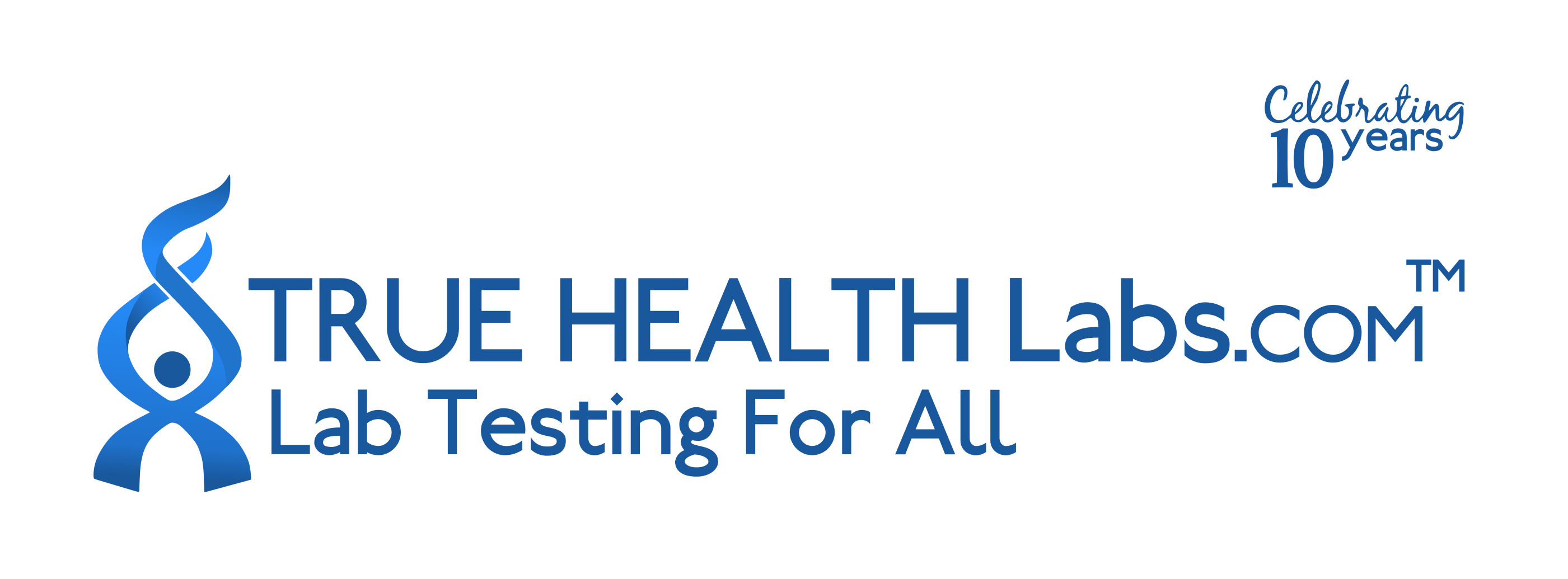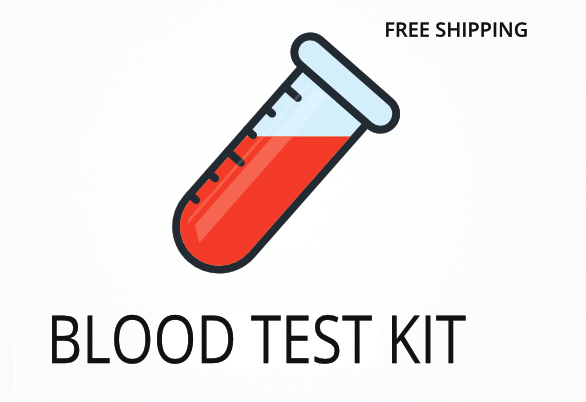Ordering the Heavy Metals Blood Test by Great Plains Labs
The Heavy Metals Blood Test by Great Plains Labs helps detect recent or ongoing exposure to toxic elements like lead, mercury, and arsenic, as well as imbalances in essential minerals such as zinc, magnesium, and selenium. This test uses whole blood to measure both the amount of these elements circulating in the blood and those stored inside blood cells, giving a more complete picture of exposure and nutritional status. Interestingly, some heavy metals can mimic essential minerals in the body, making it difficult to spot imbalances without specific testing.
Ordering this test can help you:
- Identify hidden exposure to toxic metals that may not show up in routine checkups
- Detect early signs of mineral deficiencies or excesses before symptoms become severe
- Monitor the effectiveness of detoxification or chelation therapy
- Track changes in heavy metal levels after environmental or occupational exposure
- Support targeted nutrition plans by revealing specific mineral imbalances
Who Should Consider Heavy Metal and Mineral Screening
People who have unexplained symptoms like fatigue, headaches, or mood changes may benefit from this test, especially if they live in areas with known environmental risks. For example, a parent whose child has been struggling with learning difficulties and irritability might want to check for hidden heavy metal exposure, as these elements can affect brain function and development.
Ordering this test may also be helpful in these situations:
- Living near industrial sites or areas with contaminated water supplies
- Working in jobs with regular contact with metals, such as construction or manufacturing
- Experiencing sudden hair loss, skin rashes, or digestive issues without a clear cause
- Having a history of using imported herbal remedies or supplements
- Owning or renovating older homes, as old paint and pipes can be a source of lead exposure
Testing for heavy metals and minerals can reveal specific imbalances that may be causing symptoms like muscle weakness, joint pain, or memory loss, allowing for targeted treatment and monitoring. Delaying this test could mean missing the chance to address exposure before it leads to more serious or lasting problems.
Preparing for Toxic and Essential Element Testing
Fasting is not required for this blood test, so you can eat and drink as usual before your appointment. Always follow any instructions or special guidance your doctor or healthcare provider gives you to make sure your sample is collected correctly and your results are as useful as possible.
Labs Included When Ordering Your Heavy Metals Blood Test by Great Plains Labs
| Test Name | Reference Range | What This Biomarker Means | Low and High Levels of Heavy Metals Blood Test |
|---|---|---|---|
| Essential Elements | |||
| Calcium | 8.6 – 10.2 | Calcium is needed for strong bones, muscle movement, and nerve function. It also helps blood clot and supports heart rhythm. |
High levels mean possible overactive parathyroid, certain cancers, or too much vitamin D.
Low levels mean possible kidney issues, low vitamin D, or problems with parathyroid glands. |
| Copper | 0.75 – 1.45 | Copper helps make red blood cells and keeps nerves and the immune system working. It also helps the body use iron. |
High levels mean possible liver disease, certain genetic conditions, or too much copper in the diet.
Low levels mean possible malnutrition, digestive problems, or genetic disorders. |
| Lithium | 0.6 – 1.2 | Lithium is a trace mineral sometimes used in medicine for mood support. It is not needed in large amounts for most people. |
High levels mean possible medication overdose or kidney problems.
Low levels mean usually not a concern unless prescribed for treatment. |
| Magnesium | 1.7 – 2.2 | Magnesium helps muscles and nerves work, keeps the heartbeat steady, and supports the immune system. |
High levels mean possible kidney problems or too much magnesium from supplements.
Low levels mean possible poor diet, digestive issues, or certain medications. |
| Manganese | 0.4 – 0.85 | Manganese helps the body process cholesterol, carbohydrates, and protein. It also supports bone formation and wound healing. |
High levels mean possible overexposure from the environment or supplements.
Low levels mean possible poor diet or absorption problems. |
| Molybdenum | 0.004 – 0.015 | Molybdenum is needed in tiny amounts to help enzymes break down certain amino acids and toxins. |
High levels mean possible overexposure from supplements or rare metabolic issues.
Low levels mean possible rare genetic conditions or poor diet. |
| Selenium | 70 – 150 | Selenium helps protect cells from damage and supports thyroid function and the immune system. |
High levels mean possible overuse of supplements or environmental exposure.
Low levels mean possible poor diet or absorption problems. |
| Strontium | 0.02 – 0.05 | Strontium is similar to calcium and is sometimes used for bone health. It is not needed in large amounts. |
High levels mean possible overexposure from supplements or environment.
Low levels mean usually not a concern unless prescribed for treatment. |
| Zinc | 70 – 120 | Zinc helps the immune system, supports wound healing, and is needed for growth and development. |
High levels mean possible overuse of supplements or rare metabolic issues.
Low levels mean possible poor diet, absorption problems, or chronic illness. |
| Vanadium | 0.001 – 0.005 | Vanadium is a trace mineral with unclear roles in the body, but it may help with blood sugar control in small amounts. |
High levels mean possible overexposure from environment or supplements.
Low levels mean usually not a concern for most people. |
| Chromium | 0.02 – 0.08 | Chromium helps the body use sugar and fat and may support healthy blood sugar levels. |
High levels mean possible overexposure from supplements or environment.
Low levels mean possible poor diet or absorption problems. |
| Toxic Elements | |||
| Arsenic | 0.0 – 0.9 | Arsenic is a toxic metal that can come from contaminated water, food, or industrial sources. It can affect nerves, skin, and organs. |
High levels mean possible recent or ongoing exposure, which can cause skin changes, digestive issues, or nerve problems.
Low levels mean no significant exposure detected. |
| Barium | 0.0 – 2.0 | Barium is a metal found in the environment. High levels can affect the heart, blood pressure, and muscles. |
High levels mean possible exposure from contaminated water or industrial sources.
Low levels mean no significant exposure detected. |
| Cadmium | 0.0 – 1.0 | Cadmium is a toxic metal found in batteries, tobacco smoke, and some foods. It can harm the kidneys and bones. |
High levels mean possible exposure from smoking, contaminated food, or workplace hazards.
Low levels mean no significant exposure detected. |
| Cobalt | 0.0 – 0.5 | Cobalt is used in some metal alloys and batteries. High levels can affect the heart and thyroid. |
High levels mean possible exposure from metal implants or industrial sources.
Low levels mean no significant exposure detected. |
| Lead | 0.0 – 4.9 | Lead is a toxic metal that can cause learning problems, memory loss, and kidney damage. It is often found in old paint and pipes. |
High levels mean possible exposure from old buildings, contaminated water, or certain jobs.
Low levels mean no significant exposure detected. |
| Mercury | 0.0 – 10.0 | Mercury is a toxic metal found in some fish, dental fillings, and industrial pollution. It can affect the brain, nerves, and kidneys. |
High levels mean possible exposure from fish, dental work, or workplace hazards.
Low levels mean no significant exposure detected. |
| Nickel | 0.0 – 1.0 | Nickel is used in coins, jewelry, and some foods. High levels can cause skin rashes and breathing problems. |
High levels mean possible exposure from jewelry, coins, or industrial sources.
Low levels mean no significant exposure detected. |
| Platinum | 0.0 – 0.05 | Platinum is used in jewelry, medical devices, and car parts. High levels can cause allergic reactions or breathing issues. |
High levels mean possible exposure from medical devices or industrial sources.
Low levels mean no significant exposure detected. |
| Thallium | 0.0 – 0.5 | Thallium is a toxic metal used in some electronics and pesticides. It can affect nerves, skin, and hair. |
High levels mean possible exposure from contaminated products or industrial sources.
Low levels mean no significant exposure detected. |
| Tungsten | 0.0 – 0.2 | Tungsten is used in light bulbs and electronics. High levels can affect the lungs and kidneys. |
High levels mean possible exposure from industrial sources or contaminated water.
Low levels mean no significant exposure detected. |
| Uranium | 0.0 – 0.03 | Uranium is a radioactive metal found in some rocks and water. High levels can harm the kidneys and bones. |
High levels mean possible exposure from contaminated water or industrial sources.
Low levels mean no significant exposure detected. |
Reference ranges may change slightly as labs update their methods or as new research becomes available. Always check your report for the most current reference values.
Heavy Metals Blood Test FAQ
Is there Heavy Metals Blood Test testing near me?
This is a test kit that can be collected at a local draw site—check the draw location link at the top of the page. For people with symptoms like fatigue or memory issues, having a nearby collection site makes it easier to get tested quickly and start finding answers.
How do I interpret the test results?
While your treating physician should review your results, you can also use our one-on-one test results review service with our clinical team for a detailed explanation and next steps.
What is the cost of the test?
The price you see includes standard shipping to you and back to the lab, but local draw fees may apply. Ordering this test can help you pinpoint hidden exposures or imbalances, so you can address symptoms like fatigue or brain fog more effectively.
How often should I retest?
Retesting is usually recommended every 6 to 12 months, especially if you have ongoing exposure risks or are following a treatment plan. Regular monitoring helps track changes and ensures that any interventions are working as expected.
How accurate is the test?
This test uses inductively coupled plasma mass spectrometry (ICP-MS), which is highly sensitive and specific for detecting metals in blood. Specificity is 99.5% and sensitivity is 98.7%. TrueHealthLabs.com partners with CLIA-certified and CAP-certified laboratories to uphold rigorous testing standards for dependable results.
Important Notes
- Hydrate for 24-48 hours prior to your scheduled blood draw.
- The test is not available in New York. Contact us with questions.
Medical Review Board
Reviewed by Jeff Donohue M.D. from Body Logic and Brady Hurst DC, CCCN. Written by True Health Lab’s team of editorial health contributors.
Disclaimer: This information is for educational purposes only and not intended as medical advice. Consult your healthcare provider for personalized guidance.
Why Customers Trust True Health Labs - What People are saying
Also rated 4.6 out of 5 based on 3452 ShopperApproved reviews- See all TrueHealthLabs.com reviews.







